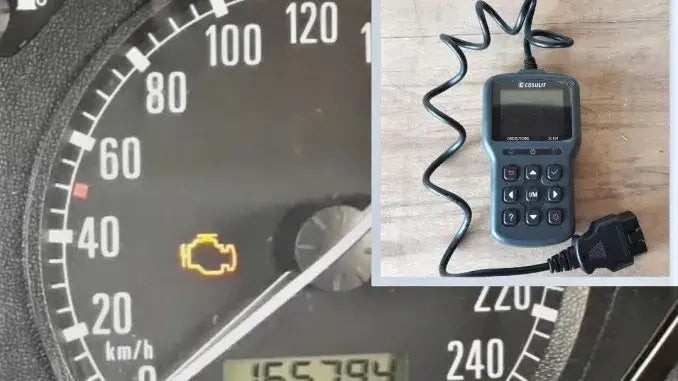A flashing check engine light can be stressful. Don’t panic! While it’s crucial not to ignore it, you might be able to address the issue yourself with an Obd2 Reset. This guide provides a step-by-step approach to using an OBD2 code reader to clear your check engine light, saving you a potentially costly trip to the mechanic.
An OBD2 code reader, also called an OBD2 scanner, is essential for this process. Remember, some basic readers only display codes without the capability to clear them. Ensure yours has both functions. A reliable option is the CGSULIT SC301.
Performing an OBD2 Reset: A Step-by-Step Guide
While prior experience with an OBD2 reader is helpful, this guide will walk you through each step, making it accessible even for beginners.
1. Locating the OBD2 Port
The OBD2 port is typically located under the dashboard on the driver’s side, often near the steering column.
2. Connecting the OBD2 Code Reader
Carefully plug the OBD2 code reader into the port. Ensure a secure connection.
3. Turning on the Ignition
Turn the ignition key to the “on” position without starting the engine. This powers up the car’s computer system and the OBD2 reader.
4. Initiating the Scan
Allow the OBD2 reader to perform a scan of your vehicle’s system. This process identifies the error codes triggering the check engine light.
5. Interpreting the Error Codes
The reader will display a list of Diagnostic Trouble Codes (DTCs). Understanding these codes is crucial. Consult the internet or your reader’s built-in code library for definitions. This step helps determine the severity of the problem.
6. Clearing the Check Engine Light
If you determine the issue is minor, navigate to the “Tools” menu on your reader and select the “Clear Codes” or similar option. Confirm your selection.
7. Returning to the Home Screen
Go back to the reader’s main menu. This usually involves pressing an “escape” or “return” button.
8. Disconnecting the OBD2 Reader
Safely disconnect the reader from the OBD2 port. If your device has a power button, turn it off before removal.
9. Turning Off the Ignition
Turn the ignition key completely off.
10. Verifying the Reset
Start the engine. The check engine light should be off. Restart the engine a few times after it warms up to ensure the light remains off.
Conclusion
Performing an OBD2 reset is straightforward and empowers car owners to address minor issues. However, remember that clearing the code doesn’t fix the underlying problem. If the light returns, consult a mechanic for diagnosis and repair, especially if the DTC indicates a serious issue. Using an OBD2 scanner for resets is a valuable skill for DIY car maintenance, ensuring successful repairs and a worry-free drive.


